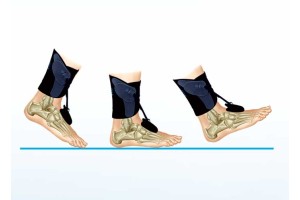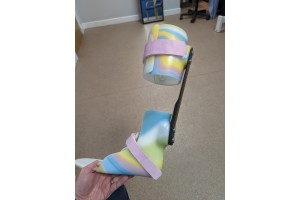We all ask the question ‘what is the best exercise I can do to achieve the best body shape?’ The answer is simple - there is no such thing as one best exercise. However, there are exercises that can focus specific muscle groups and individual training modalities (fancy term for strength, agility etc.) so we can think about the best type of exercise.
Before you start training you need to ask yourself what am I looking to achieve out of training? Are you an athlete who wishes to hone their skills? Are you just looking to lose a bit of weight? Or are you trying to improve a specific area of the body? In reality, each of these three examples requires a completely different type of training. If we take improving a specific area as a goal, we must then ask ourselves what do we want to improve?
It’s at this point that things start to get a bit more complicated. Each individual is different so each programme of exercises must be designed specifically for the individual and their goals. This is where the expertise and knowledge of a Sports Scientist or Personal Trainer will take over.
Not all of us have an expert on hand 24 hours a day so I am going to try and give a rough overview of various methods of training and explain how they affect the body. I could talk for days about all the different training modalities so instead I will focus on the 2 most common and can target more obscure ones at a later date.
The 2 most common training modalities that I will focus on are muscle endurance training and strength training.
The Most Common Types of Training
Muscle endurance training
Muscle endurance training is one of the most important modalities if not the most important, sadly it is frequently missed out, mainly by the male population who want to walk into the gym, grab the biggest weight and throw it above their head ignoring technique and form.
Muscle endurance is a very important modality because it gives a solid base for both strength and technique. Too often have I walk into a gym and witnessed someone pick up a weight that’s obviously too heavy for them, lie on the bench and scream and splutter as they use all the muscle they are not supposed to in an attempt to lift the weight. This is both extremely dangerous from a potential injury perspective but also for other gym users who try to copy the technique that they have witnessed. Before long the entire weight area is full of screaming and spluttering clones.
To train muscle endurance properly you will be lifting a lighter weight than strength training. A good way to judge if the weight is correct is to see where you fail (can’t do another repetition or lift). For muscle endurance you are aiming to fail between 12 and 20 repetitions (reps) on your first set. If you can’t reach 12 reps the weight is too heavy and if you can do more than 20 reps, the weight is too light. This will ideally be performed over 3 sets with a 20 second rest between each set however the 2nd and 3rd set may not reach 12 repetitions; this is not a problem; the first set is the guide to see if the weight is correct.
It will require a bit of experimenting to begin with but once you get the starting weight correct you can then work out when you require to increase the weight. E.g. if the weight becomes too light you will be lifting more than 20 reps and need to up the weight.
The lighter weight has the benefit of allowing you to perform full movements (not half repetitions) of the exercise in a steady and controlled manor, all in all allowing you to perfect your technique. One good repetition is worth 10 poor repetitions.
As an example I will use bench press. The bar should start above to your chest with your arms straight but not fully locked, from here the arms will bend and the bar will be lowered to just above your chest over 2 – 3 seconds and then return to the starting position over another 2 – 3 seconds. When performing the exercise your back should remain flat on the bench and feet flat on the floor, at no point should your back arch when performing the lift. If this happens the weight is too heavy and should be lowered. That would be one correct repetition!
Muscle endurance benefits the body by increasing size of the muscle while also making the muscle more defined.
Strength Training
Strength training should only be started once a good base has been established from muscle endurance training. Strength training is mainly used to increase muscle size. It is very similar to muscle endurance however performed with a heavier weight.
A good way to judge if the weight is correct is to see where you fail (can’t do another repetition or lift). For strength you are aiming to fail between 6 and 10 repetitions (reps) on your first set. If you can’t reach 6 reps the weight is too heavy and if you can do more than 10 reps, the weight is too light. This will ideally be performed over 3 sets with a 60 second rest inbetween each set. The 2nd and 3rd set may not reach 6 repetitions; this is not a problem; as before the first set is the guide to see if the weight is correct.
The technique should remain the same as it was when performing the muscle endurance training. If the technique is not the same, the weight may be too heavy and should be reduced to help avoid injury.
Strength training is very good at increasing muscle size however it may not make the muscle as defined as muscle endurance training, as such a combination of both should be used if you are looking for both size and definition.
Stay connected with us on Facebook to receive more training articles and tips.










